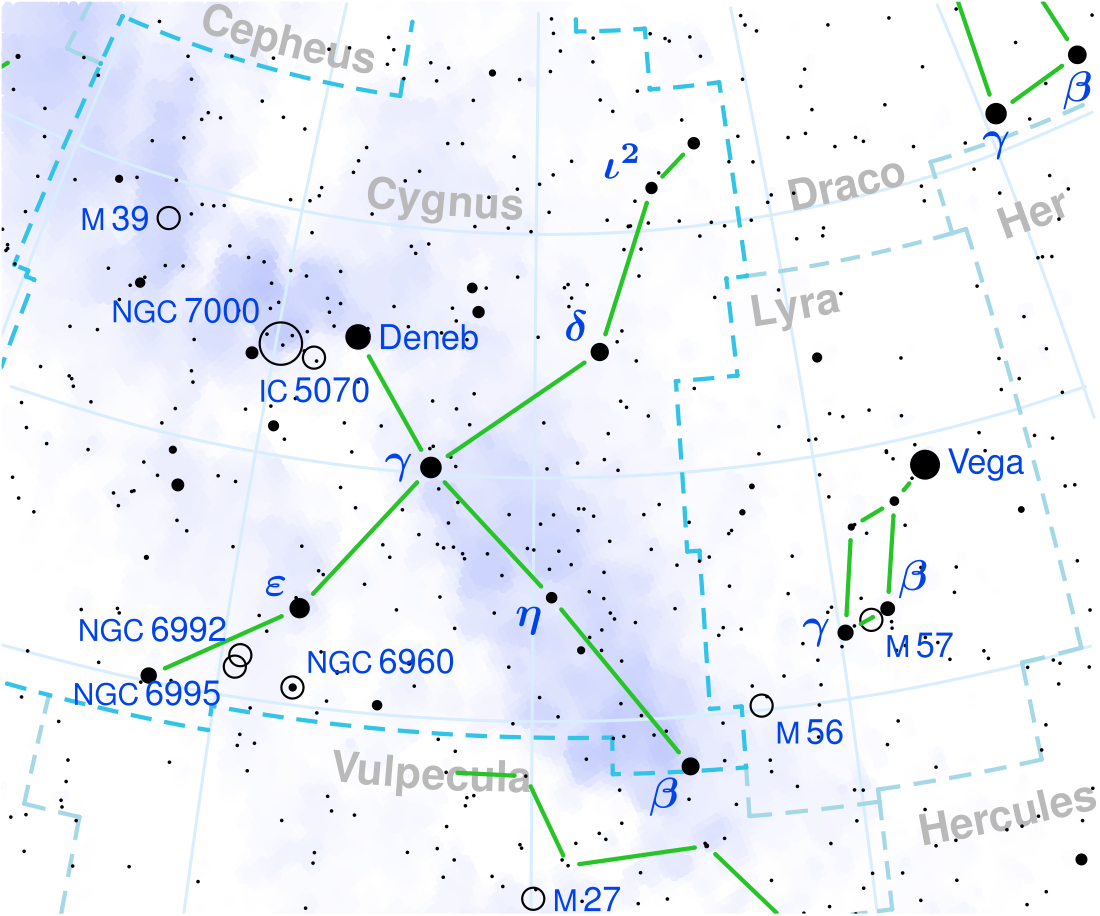Kepler-1638 is a G-type main-sequence star located about 5,000 light years away in the constellation of Cygnus.[1] One known exoplanet has been found orbiting the star: Kepler-1638b.[5][6][7][8]As of January 2021, Kepler-1638 is the farthest star with a known exoplanet orbiting in the habitable zone.[9]
| Observation data Epoch J2000.0 Equinox J2000.0 (ICRS) | |
|---|---|
| Constellation | Cygnus[1] |
| Right ascension | 19h 41m 55.76712s[2] |
| Declination | +48° 31′ 27.9998″[2] |
| Apparent magnitude (V) | 14.769±0.206[3] |
| Characteristics | |
| Evolutionary stage | main sequence star |
| Spectral type | G4V[citation needed] |
| Apparent magnitude (J) | 13.550±0.023[4] |
| Apparent magnitude (H) | 13.204±0.024[4] |
| Apparent magnitude (K) | 13.138±0.035[4] |
| Variable type | Planetary transit,[3] rotationally variable[4] |
| Astrometry | |
| Proper motion (μ) | RA: −5.092 mas/yr[2] Dec.: +5.839 mas/yr[2] |
| Parallax (π) | 0.6462 ± 0.0165 mas[2] |
| Distance | 5,000 ± 100 ly (1,550 ± 40 pc) |
| Details[3] | |
| Mass | 0.9700+0.0490 −0.0590 M☉ |
| Radius | 0.9500+0.1660 −0.0790 R☉ |
| Temperature | 5710.0+96.696 −111.431 K |
| Metallicity [Fe/H] | −0.0100+0.1410 −0.1880 dex |
| Age | 4.37+4.19 −2.59 Gyr |
| Other designations | |
| Database references | |
| SIMBAD | data |
Planetary system
| Companion (in order from star) |
Mass | Semimajor axis (AU) |
Orbital period (days) |
Eccentricity | Inclination | Radius |
|---|---|---|---|---|---|---|
| b | ~4.16 M🜨 | 0.745+0.021 −0.020 |
259.33683±0.01303 | — | 89.9954+0.0021 −0.0844° |
1.87+0.33 −0.22 R🜨 |
Kepler-1638 b is an exoplanet in orbit of its star, Kepler-1638, located in the constellation Cygnus. It was confirmed in 2016 as part of a study statistically validating hundreds of Kepler planets. Based on the parameters in the discovery paper, the planet is a super-Earth, with a radius of 1.87+0.33
−0.22 R🜨, and a predicted mass of 4.16 Earths. It has an orbit of 259.337±0.013 days in its system's habitable zone and orbits 0.745 AU from its star. It is the most distant known exoplanet that is considered potentially habitable.[3][8][5][6][7]
However, these parameters were estimated before the first measurement of the host star's parallax was published as part of Gaia DR2 in 2018. The Gaia parallax suggests a distance of about 1,548 parsecs (5,050 light-years),[2] much farther than the pre-Gaia estimate of about 764 parsecs (2,490 light-years).[10] This revised distance results in a significantly larger estimate of the radius of the star, and thus of the planet, with a 2018 study finding a planetary radius of 3.226+0.201
−0.315 R🜨. This would make the planet an ice giant like Neptune, and thus not potentially habitable in an Earth-like sense.[11][3]
References
See also
Wikiwand in your browser!
Seamless Wikipedia browsing. On steroids.
Every time you click a link to Wikipedia, Wiktionary or Wikiquote in your browser's search results, it will show the modern Wikiwand interface.
Wikiwand extension is a five stars, simple, with minimum permission required to keep your browsing private, safe and transparent.

